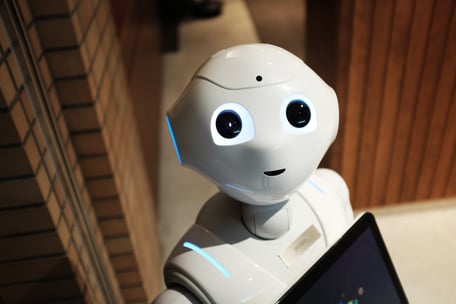AI improves the security in invoice management
Written by Thea Krekke
.jpg?width=960&name=_DSC3416%20copy%20(1).jpg)
AI, or artificial intelligence, offers many advantages in detecting threats, anticipating attacks, and automating response strategies. However, it's risky to rely entirely on these systems. Why? Even advanced AI can be prone to errors, manipulations, and attacks that can compromise AI-based security systems.
A common myth is that only large enterprises are targeted by cyberattacks. The truth is that small and medium-sized businesses are often more vulnerable and can be surprising targets for hackers. But there's another, perhaps more hidden risk. Small businesses often serve as entry points to larger ones. This is known as a supply chain attack, where cybercriminals exploit a smaller business with the ultimate goal of accessing a larger business that the smaller one transacts with.
How AI can be used safely:
Detect abnormal transactions:
In today's data-driven economy, it can be extremely challenging, if not impossible, for individuals to manually detect suspicious activity in invoice transactions.
By using AI-based security systems, one can counteract abnormal transactions by swiftly scanning and learning about irregular patterns, learning from past attacks, and identifying sudden changes in invoice amounts or similar.
Minimize manual, human errors:
Humans aren't infallible.
Mistyping an invoice can have significant financial implications. Thanks to AI, many of these errors can be prevented before they occur.
With smart systems like Compello, invoices can be automatically received, accounted for, and processed through intelligent rules and AI, significantly reducing the possibility of human errors.
Protect against phishing and fraud:
Phishing attacks and invoice fraud are a constant threat to businesses.
Through AI, systems can proactively analyze and compare incoming invoices with established and secure patterns, and cross-check against a database of trusted suppliers, reducing the risk of fraud.
There are two sides:
On one hand, AI technology can enhance cybersecurity by detecting and counteracting threats in real-time, learning from past attacks, and automating responses to security incidents. In this way, the security team can be ahead of the curve and achieve better outcomes.
On the other hand, attackers can also use AI to enhance their attack methods, identify security vulnerabilities faster, and bypass traditional security systems.
This leads to a perpetual race to stay one step ahead, with endless innovation and development on both sides.
It's crucial for organizations to be aware of this duality, so they can invest in robust AI-driven security solutions while remaining vigilant against potential AI-driven threats.
| Strength | Weakness |
|
|
The use of AI technology in cybersecurity requires careful management.
AI has immense potential to bolster cybersecurity by automating tasks, detecting patterns, and reducing human errors.
However, it can also introduce new vulnerabilities that attackers can exploit.
Organizations need to be aware of the risks and take the necessary steps to address them. This includes investing in AI-driven security solutions, continuously testing them for vulnerabilities, and staying vigilant against emerging threats.
Ultimately, it boils down to who can harness AI technology better - the defenders or the attackers.
Cybersecurity in Compello
With us, user data is well protected. As part of Visma, a top provider of cloud services, we adhere to high security requirements and standards.




